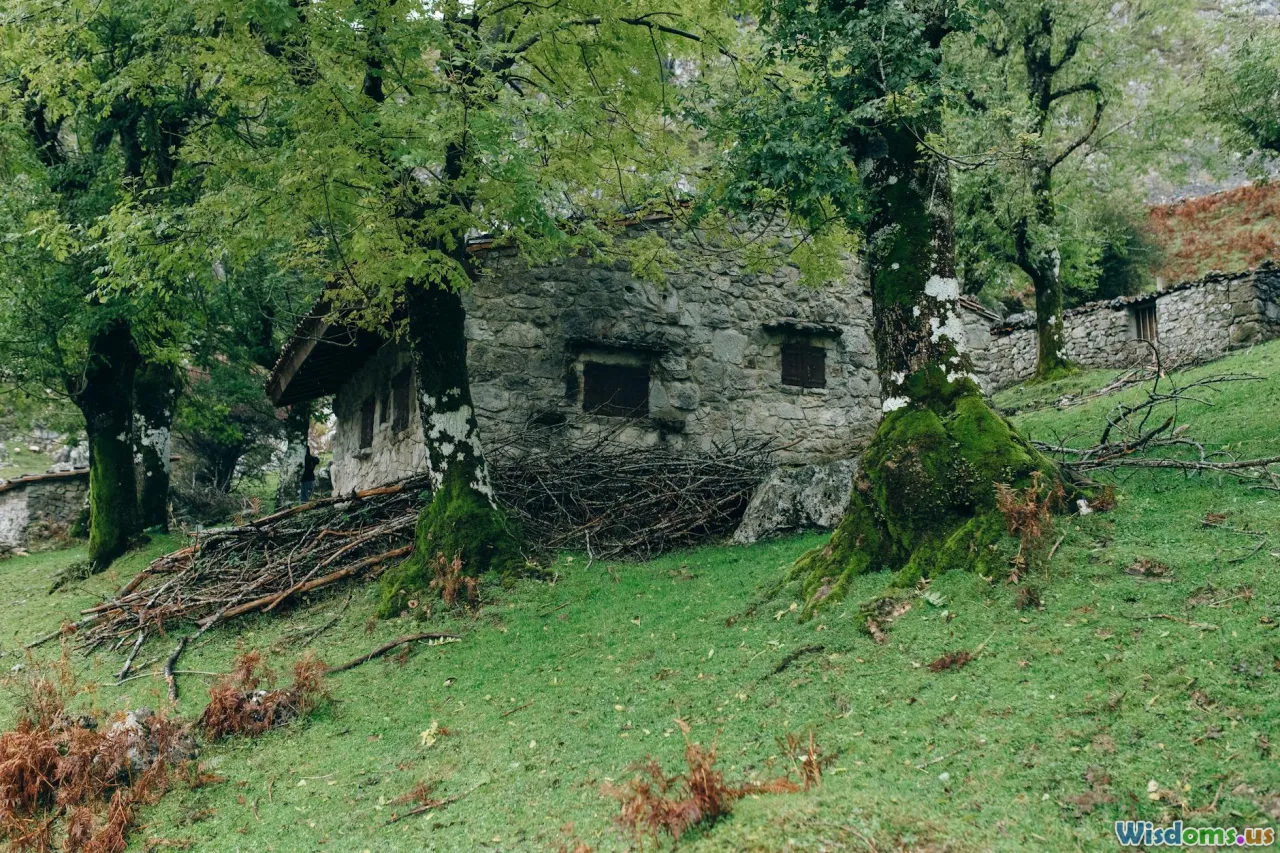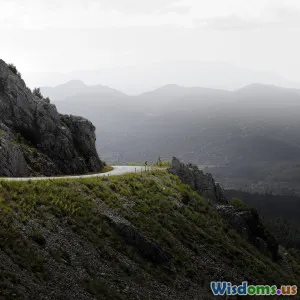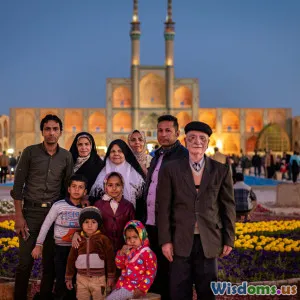
Why Eco Friendly Trekking Is Transforming Adventure Travel
8 min read Exploring how eco-friendly trekking is revolutionizing adventure travel with sustainable practices, environmental conservation, and immersive cultural experiences. (0 Reviews)
Why Eco-Friendly Trekking Is Transforming Adventure Travel
Adventure travel has long captured the hearts of wanderers seeking thrills, nature’s beauty, and cultural immersion. Today, amid increasing environmental awareness and mounting climate concerns, a powerful transformation is underway: eco-friendly trekking. This approach to adventure travel combines exhilarating exploration with sustainable, responsible practices that honor both the planet and local communities. But why is eco-friendly trekking rapidly becoming the cornerstone of modern adventure travel? Let’s dive deep into the causes, benefits, and inspiring examples driving this movement.
The Rise of Eco-Friendly Trekking: Setting the Stage
A New Generation of Travelers
Modern adventurers are different from the explorers of decades past. Millennials and Gen Z travelers especially seek meaningful experiences that align with their values. A 2019 booking survey by Booking.com revealed that 70% of global travelers want to travel more sustainably. These environmentally conscious tourists push for adventures that minimize harm, preserve biodiversity, and support indigenous cultures.
Environmental Urgency
Adventure hotspots like the Himalayas, Patagonia, and the Amazon have felt the impacts of overtourism. Increased foot traffic leads to trail erosion, litter, and wildlife disruption. Melting glaciers and deforested areas paint a stark picture of climate change’s impact. Eco-friendly trekking offers a pressing solution.
Eco-Friendly Trekking Principles: What Sets It Apart
1. Leave No Trace Ethic
At the core of eco-friendly trekking is a commitment to Leave No Trace principles—pack out all trash, avoid disturbing wildlife, and stay on designated paths. This reduces environmental degradation. Studies show that applying these principles in popular trails like the Inca Trail has slowed soil erosion by up to 40%.
2. Low-Impact Gear and Practices
Many eco-trekkers prioritize sustainable gear made from recycled or biodegradable materials. Solar-powered devices, refillable water bottles, and eco-friendly tents replace traditional equipment that generates waste. For instance, brands like Patagonia produce backpacks from recycled nylon, emphasizing circular economies.
3. Supporting Local Communities
Eco-friendly trekking integrates local guides, homestays, and community-based tourism. This ensures economic benefits remain with indigenous peoples and promotes cultural preservation. In Nepal, programs like the Local Sustainable Tourism Lab train ethnic Sherpas to lead eco-treks, empowering communities.
4. Carbon Offsetting and Minimizing Travel Footprint
Responsible adventurers opt to offset their carbon emissions by contributing to reforestation projects or investing in renewable energy. They also choose overland transportation or sustainable airlines when possible.
Real-World Examples of Eco-Friendly Trekking’s Impact
The Annapurna Conservation Area, Nepal
The Annapurna Conservation Area Project (ACAP) is a pioneer in blending trekking tourism with environmental protection. ACAP imposes sustainable trekking permits that fund park maintenance and community development. They require trekkers to carry waste bags removing used toilet paper and plastics.
Torres del Paine Circuit, Patagonia
In Patagonia, Chile is leading eco trekking efforts by limiting daily hikers and installing composting toilets. The circuit’s National Park has successfully reduced litter by over 65% since introducing these limits. Visitors also use refill stations for water, minimizing single-use plastic.
Kilimanjaro Eco-Friendly Routes, Tanzania
Given Kilimanjaro’s popularity, eco-friendly trek routes have been mapped to divert traffic from vulnerable areas. Local operators use solar energy and donate a portion of proceeds to forest conservation efforts ensuring habitat protection.
Why Eco-Friendly Trekking Enhances the Adventure Travel Experience
Deepening Connection to Nature
By trekking responsibly, adventurers foster respect and intimacy with pristine environments. Without noisy motors or litter, the wilderness experience is authentic and rejuvenating. Natural sounds like birdcalls and rustling leaves become the soundtrack.
Heightened Cultural Exchange
Engagement with local communities through homestays or shared meals creates genuine cultural insights instead of superficial encounters. This enriches travelers’ understanding and promotes cross-cultural empathy.
Encouraging Mindful Travel Behavior
Eco trekking breeds a spirit of mindfulness and accountability—values that travelers tend to carry beyond their trips. Awareness about one’s footprint ripples into daily environmental responsibility.
Preserving Destinations for Future Generations
Sustainable trekking stabilizes fragile ecosystems and keeps trails enjoyable. Visitors help maintain natural beauty rather than speed its demise.
How to Embark on an Eco-Friendly Trekking Adventure
Research and Choose Responsible Operators
Seek companies vetted for sustainability certifications such as GSTC or EarthCheck. Reviews from past eco travelers can reveal credibility.
Pack Smart and Light
Opt for reusable, repairable, and minimal-impact gear. Carry biodegradable soap and avoid single-use plastics.
Respect Local Guidelines and Customs
Adhere to trail rules, avoid navigating off marked paths, and engage respectfully with cultures.
Offset Your Carbon Footprint
Use apps like Cool Effect or Climatize to calculate and support reforestation or clean energy projects.
Educate Yourself and Others
Before you leave, learn about the ecosystem, endangered species, and cultural heritage of your trekking destination.
The Future of Adventure Travel is Green
Eco-friendly trekking is no fad; it is a fundamental shift transforming how we explore the planet. With billions worldwide yearning for meaningful journeys, sustainable trekking meets the demand without sacrificing thrill, challenge, or joy. By weaving environmental stewardship, cultural respect, and mindful tourism into every step, eco trekking ensures the mountains, forests, and trails remain wondrous for generations.
As Indian mountaineer and environmentalist Bachendri Pal said, “The mountain teaches patience and reverence. It is our duty to protect it in return.” Trek responsibly, tread lightly, and discover more than just breathtaking landscapes—discover a new way to adventure.
References
- Booking.com, Sustainable Travel Report, 2019
- Annapurna Conservation Area Project (ACAP) official website
- Patagonia, Sustainable Gear Overview
- Torres del Paine National Park management reports
- Kilimanjaro National Park authority
- Leave No Trace Center for Outdoor Ethics
Start your journey today. Choose eco-friendly trekking and transform not just your travels, but the world.
Rate the Post
User Reviews
Popular Posts




















